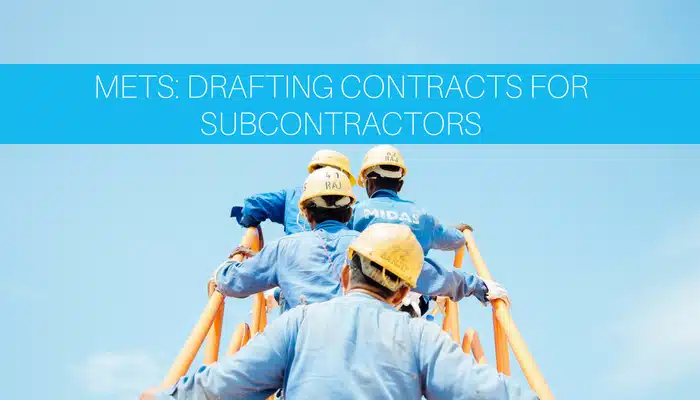There are times when mining equipment, technology, and services companies (METS) need to subcontract specific work to other companies. This can be anything from assistance with installations to specific parts/equipment needed to make up a larger solution they are selling to their client. From time to time, we will see METS companies that are quite comfortable reviewing the standard contracts from the major miners but have no procedures in place to manage their own contacts process.
Many mining service providers have limited resources from both a time and money perspective. They are pulled in multiple directions, dealing with multiple jurisdictions, whether it is in Australia or internationally, and they make the mistake of viewing contracts as a mere legal formality, and as a result, will often overlook not just a contract’s importance but also its usefulness. Because of this, poorly drafted contracts will often be ambiguous, contain unnecessary clauses, and even be contradictory in some areas. They may even include incorrect specifications. When this occurs, it means that the contract will be of little practical use to the team on the ground.
Instead, we take the view that an effective contract should ideally be able to be used as a type of guidebook for all the parties to use on the project. A good contract will clearly define who the parties are and their role in the project. This should include their entitlements, duties, and powers. It will outlay how the work is to be completed when it is to be completed by, and describe the standards of the work. More importantly, the contract provided to subcontractors will reflect and take into consideration the principal contract with the mining company.
An effective contract will be the following:
- Clear as to the subject matter;
- Certain in relation to the intention of the parties;
- Free of any potential ambiguities;
- A complete record of the parties’ agreement;
- Must not be able to be contradicted; and
- Must be able to be enforced.
Once the contract is drafted and signed, you now need to make sure that the project managers and key personnel fully understand the contract if they are to be expected to adequately represent the interests of their company. By having your key personnel involved, they can identify when a subcontractor strays from the terms so that it can be managed immediately. If they are not familiar with a contract, and something goes wrong with the project, or a dispute between the parties arises, they will need to be able to turn to the contract for guidance on how to resolve the issue or settle a conflict.
Given the widespread use and prevalence of standard form general conditions in contracts, many engineers and other mining personnel will form the misguided view that lawyers are not needed in order to draft a contract. This is not the case, and especially if someone is looking to make modifications to a condition of a standard contract, they should consult with an experienced lawyer to avoid major difficulties, disputes, or serious claims that could have been easily avoided during the drafting and negotiation stage. We think that one of the key things to keep in mind with contracts is that it is important to strike a balance between sticking too closely to the standard form version of the contract and/or making too many changes that could have unforeseen consequences.
A successful and effective contract will be one that is fair to both of the parties and takes into account the principles discussed in this post. In our experience, if a contract does not meet these principles, its usefulness and ability to fulfill its function will be severely compromised from the outset. By taking the time and resources to ensure that a contract has been properly drafted and key personnel are involved, the efficiency of a project can be increased and delays and conflict further down the line can be avoided.
Some of the ways that we work with clients to help them are:
- Assitance with drafting contract templates that can be used for different situations;
- Provide alternative terms that can be interchanged for specific clauses that are commonly contested; and
- Train key personnel to understand the standard terms and what to do when there is a breach.
We will dive into specifics of the subcontractor contracts in later blog posts.
———-
Harris Gomez Group is an international law firm with offices in Santiago, Bogotá, and Sydney. Our firm has been working with mining equipment, service, technology providers both in Australia and internationally for 16 years. We find that our clients appreciate that we understand the industry, provide fixed pricing, and take the time to learn our clients business.
To better understand how we can support you, please contact us at hello@hgomezgroup.com







